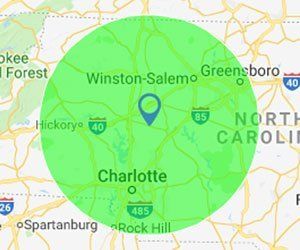Answers to Commonly Asked Chimney-Related Questions
Q. How Often Should I Have My Chimney Swept?
To be safe, you should have your chimney swept once a year. A sweep will make sure your chimney is free from deposits and check for soundness. Even if you don't use your chimney or fireplace much, animals may build nests in the flue or deterioration may make the chimney unsafe to use. Factory-built fireplaces should be swept when any type of buildup appears. Any deposit is quite acidic and can cause a chimney fire capable of damaging the chimney or spreading to your home.
Q. If I Heat With Gas, Should My Chimney Be Checked?
Yes! Although gas is generally a clean burning fuel, any debris blocking the flue can pose a hazard. We suggest you check on.
Q. How can I Tell Whether My Chimney Has Really Been Cleaned?
A complete chimney sweeping includes cleaning the brick in the fireplace firebox, chimney flue, and smoke chamber. There are different levels of chimney inspection and sweeping. The different levels of inspection are detailed in the National Fire Protection Association 211: Stand on Chimneys, Fireplaces, Vents and Solid Fuel-Burning Appliances. For more information on which level is appropriate for your chimney, contact
our CSIA certified chimney sweeps!
Q. What can I do if My Fireplace Starts to Smell?
The smell is likely due to creosote deposits in the chimney. The odor is usually worse in the summer when the humidity is high and the air conditioner is turned on. A good sweeping will help, and there are commercial chimney deodorants that work pretty well. Many people have good results with baking soda or kitty litter set in the fireplace.
The problem is caused by air being drawn down the chimney as part of an overall pressure problem in the house. Some make up air should be introduced somewhere in the house. A top mounted, tight sealing damper will also reduce airflow coming down the chimney.
Make up air will also solve most excess smoke exiting the fireplace into your home
Q. What Is Creosote? How Do I Get Rid of It?
Creosote is a natural byproduct of wood burning. A good sweeping will often help; however, if the creosote is quite thick, you may need to use chemicals to treat it.
If the creosote is gummy, you will need a chemical treatment or acid application. If the creosote is crusty or fractures when hit a rotary cleaning can be helpful. For more information on getting rid of creosote, please give us a call.
Lifetime WARRANTY available! Call us for all of your chimney sweeping needs.
704-278-1499
Call Above & Beyond Chimney Solutions today to schedule your chimney cleaning and inspection!

